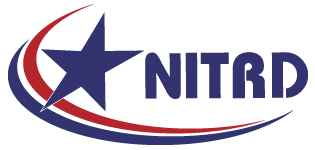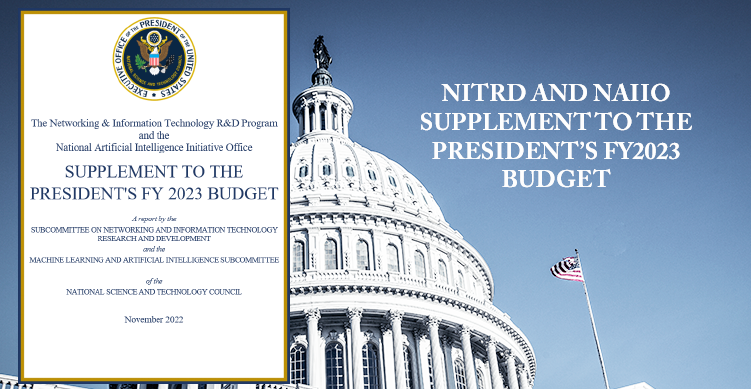View Full Text: FY2023-NITRD-NAIIO-Supplement.pdf
The Networking and Information Technology Research and Development (NITRD) Program is the Nation’s primary source of federally funded R&D in advanced IT for computing, networking, and software. NITRD is among the oldest and largest of formal Federal programs that coordinate the activities of multiple agencies to tackle multidisciplinary, multi-technology, and multisector R&D needs, such as within artificial intelligence (AI), high-performance computing (HPC), robotics, quantum information science (QIS), cybersecurity, advanced communications technology, big data, and digital health. The NITRD agencies now invest approximately $9.6 billion annually in R&D programs that identify, develop, and transition to practical use the advanced networking and IT capabilities needed by the Federal Government and the Nation.
Advanced networking and IT capabilities underpin U.S. technological leadership in the world, as well as American military superiority, national security, economic prosperity, energy independence, climate change, health equity, and expansion of the skilled cyber-enabled workforce. NITRD’s interagency communication and collaboration in IT R&D leverage agency strengths, help avoid duplication, and foster development of interoperable systems, thus improving the cost-effectiveness of Federal research investments. The NITRD collaboration framework also supports individual and joint agency outreach to academia and industry to foster alliances, provide a cutting-edge IT research infrastructure, and strengthen the national innovation ecosystem.
R&D is critical to the development of technologies that will launch the Nation into the next computing revolution and ensures that these advances support national priorities such as the Nation’s economic competitiveness, security, well-being, response to climate change, and leadership in science and engineering. As such, the NITRD Program’s impact on agency R&D collaboration has been crucial in providing agencies a platform to work together and with public and private entities by performing activities including, but not limited to, the following:
- Identifying R&D priorities for government, academia, and the private sector.
- For example, the company DeepMind purchased physics modeling and simulation package MuJoCo after a joint NITRD agency workshop concluded that advances in modeling and simulation are needed for robotics to advance. Based on the results published in the Proceedings of the National Academy of Sciences, DeepMind purchased MuJoCo and made it freely available.
- Providing smaller R&D agencies with access to experts to leverage common R&D gaps.
- AI R&D Interagency Working Group (IWG) workshops on common R&D objectives and privacy framework offer opportunities for smaller agencies to gain insight from larger R&D agencies.
- Highlighting key R&D priorities that are developed into research agendas by academia.
- NITRD-sponsored workshops on Assured Autonomy impact research activities at NSF, NIST, NASA, and NSA. These activities are incorporated into academic research agendas.
- Connecting agencies to resolve joint R&D gaps.
- NSF AI Institute for Edge Computing Leveraging Next Generation Networks – Athena. The AI Research Institute is funded by NSF and DHS. For more information, see Section 5.2.1.1.
- Forming partnerships to address and support science, technology, engineering, and mathematics (STEM) education and workforce development needs.
- DARPA’s Joint University Microelectronics Program funds six microelectronics research centers spanning 31 universities involving over 800 graduate students performing fundamental electronics research across over 240 projects.
- Expanding agency involvement in joint R&D priorities.
- Five High End Computing Interagency Working Group (HEC IWG) agency members have joined the DOE Exascale Computing Project (ECP) Industry and Agency Committee. Various HEC agencies have participated in past ECP workshops.
- Informing government leaders and policymakers.
- The NITRD Program reports and highlights advances in networking and information technologies through a variety of methods. For example, this Supplement, published jointly with the National AI Initiative Office (NAIIO), reports funding and research focus areas for the National AI Research Institutes.


